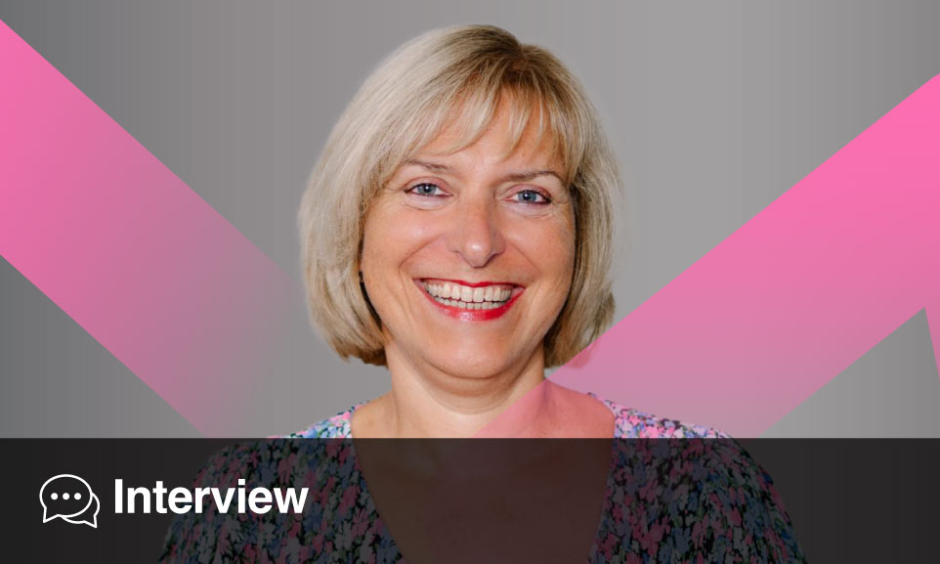An Interview with Michael Gilvarry
![]()
Written by James Coker | Reporter, European Medical Journal | @EMJJamesCoker
Disclosure: This is a non-commercial feature.
![]()
 Stroke is a disease that has devastating consequences for millions of people around the world. Overall, it is the second leading cause of death and the leading cause of disability globally, with an 6.2 million people estimated to die from the condition annually.1 To coincide with this year’s World Stroke Day campaign on the 29th October, the European Medical Journal (EMJ) spoke to Mr Michael Gilvarry, General Manager of the Neuro Technology Center at CERENOVUS, part of the Johnson & Johnson Medical Devices Companies, to discuss the latest topics and trends around the condition. Neuravi was an Irish based company, prior to its acquisition by Johnson & Johnson last year and the subsequent creation of CERENOVUS.
Stroke is a disease that has devastating consequences for millions of people around the world. Overall, it is the second leading cause of death and the leading cause of disability globally, with an 6.2 million people estimated to die from the condition annually.1 To coincide with this year’s World Stroke Day campaign on the 29th October, the European Medical Journal (EMJ) spoke to Mr Michael Gilvarry, General Manager of the Neuro Technology Center at CERENOVUS, part of the Johnson & Johnson Medical Devices Companies, to discuss the latest topics and trends around the condition. Neuravi was an Irish based company, prior to its acquisition by Johnson & Johnson last year and the subsequent creation of CERENOVUS.
Mr Gilvarry has an extensive background in this area, with involvement in numerous research projects relating to clots and in the development of innovative technological devices to treat ischaemic stroke. These tie in with the aims of CERENOVUS, and we also discussed the work and focus of the Neuro Technology Center.
Stroke Treatments
An engineer by trade, Mr Gilvarry has now spent around 20 years in the med-tech industry, focussing primarily on stroke during that time. Having initially worked on the development of an embolic protection device to be used to help treat carotid arteries, he was inspired to direct his efforts towards the treatment of stroke, viewing it as a condition for which there was substantial scope for advancements to be made. “When you look at stroke, there was no therapy available whatsoever until the late 1990s when tissue plasminogen activator (tPA) was approved as a pharmaceutical agent to treat stroke. When we began our efforts we knew that people had been trying to retrieve clots using a mechanical approach for some years but with very limited success. We saw an unmet need in that the therapy was not very effective,” he explained. “And just the sheer scale, globally every 2 seconds somebody experiences a stroke and every 6 seconds somebody dies from a stroke, so it’s very motivating to think that we’ve got an opportunity to make a real difference to this population of patients.”
In recent years, the landscape of ischaemic stroke treatment has evolved, with studies showing that mechanical thrombectomy is an effective treatment for the condition, often in combination with tPA.2
Understanding of Clot Science
The desire to create new devices to treat stroke led Mr Gilvarry and his colleagues to investigate the mechanisms that cause blood clots. “I think one of the very strong principles that we held at the time is that unless you really understand the material you’re dealing with in the body, then there’s no way really to figure out what’s a good idea and what’s a bad idea. We felt that we really needed to understand what we’re dealing with here; we need to understand blood clots if we’re developing devices to remove them. We started looking in the literature around 8 years ago and there was only really one publication that studied blood clot composition and that it only included 16 patients. So, there was a tiny amount in the literature, and in the absence of a lot of studies being done, we started doing our own experiments, making blood clot analogues.”
Stroke physicians Mr Gilvarry spoke to at the time were very interested in these findings in clot science, and this desire for research and data to be shared and publicised has driven further research by his team in collaboration with universities and stroke centres worldwide to advance the field.
He detailed the major areas he has focussed on over the years: “We’re looking at the aetiology to see if there’s an association between blood clot composition and the origin of the blood clot,” he said. “We’ve done a lot of work on characterising the physical properties, trying to characterise how clots behave, in particular during procedures as the physician is trying to remove them. There’s work being done on imaging, so trying to predict what a clot is composed of during or prior to intervention. Then a large part is modelling the stroke procedure itself. We have developed a set of clot analogues to help us to create in vitro test models; we are trying to recreate the full spectrum of blood clots with different properties. We started to publish some of this work only 2 years ago.”
He added that generally there has been substantially more interest and understanding of clot science in recent years. “When we were going to conferences around 5 years ago there was nobody really talking about the importance of blood clots,” commented Mr Gilvarry. “I’ve heard physicians say on a lot of occasions that they removed a clot from a patient, sent it to the pathology lab, and the results came back 3 days later and the report said it was a blood clot. It was a very understudied topic, years ago. However, now there’s an appreciation that the properties of blood clots do make a difference to the procedure and that in turn makes a difference to the patient’s outcome.”
It was the observations made from this research that led to the development of a number of new technologies at CERENOVUS, most notably the EMBOTRAP® II revascularization device,3 a stent retriever used to capture and remove life-threatening blood clots from the brain following an ischaemic stroke.
ARISE II Study
Recently, highly positive results from the ARISE II study were published; this single-arm, prospective, multicentre trial analysed the safety and efficacy of the EMBOTRAP® device in comparison to established stent retrievers in 227 patients with large-vessel occlusions and moderate-to-severe neurological deficits within 8 hours of symptom onset. This displayed a modified Thrombolysis in Cerebral Ischemia (mTICI) reperfusion score of ≥2b in 92.5% of the cohort. In addition, good clinical outcomes at 90 days, measured as functional independence, was found in 67%.4 The device is now approved for use in both the USA and Europe.5
Refined Procedure
The success of this device is indicative of the progress that has been made in treating ischaemic stroke on the back of the research findings of recent years. “Recanalisation now gets graded, so we now know that if you have perfect recanalisation or near-perfect recanalisation, that’s much more strongly associated with a good outcome than if you have reperfused half or two-thirds of the brain tissue,” he explained. “So the quality of reperfusion has an impact and the other thing I think there’s a better appreciation of is how quickly you need to do it; if you can do that in a single pass (i.e. in a single procedure or manoeuvre), again that’s associated with a good clinical outcome.”
He added, “So the procedure is getting more refined over time and the expectations are getting higher, but we still have a lot of work to do because the therapies are at a reasonably early stage and the more we understand about the procedure and about blood clots, the more patients are going to do well from it.”
Future Areas of Focus
Mr Gilvarry informed us that the major aim of CERENOVUS is to address unmet needs in stroke research and care, a needs-driven approach that he views as relatively unique to the industry. Current projects include a study with a leading hospital, which aims to provide deeper insights into blood clots and the recanalisation procedure by analysing the properties of the clot during each part of the procedure. They are also seeking to collaborate with stroke institutions around the world in order to produce larger-scale studies of blood clots than they had been able to manage previously.
Going forward, the team at the Neuro Technology Center is passionate about helping the minority of patients who are particularly difficult to recanalise. “When you step back and look at all of the clinical studies that were done recently, there was probably about 20% of patients that seemed to be particularly challenging to recanalise, either taking a long time, or some of them are not recanalising at all. So, trying to really focus on those more challenging cases, we need to close that gap,” he stated. Fibre-enriched blood clots are an example of this, as they are much more difficult to remove from the vessel, prolonging the procedure, which in turn reduces the likelihood of a good outcome.
Mr Gilvarry added: “There are two gaps we need to close. One is to increase the number of patients that are recanalised but again the quality and speed of recanalisation is going to deliver better outcomes to patients. And I think this is really our commitment at the Neuro Technology Center and it’s what motivates the team to keep doing this research to try and make a difference to those kinds of patients to ensure all stroke patients can return to a healthy, independent life.”
EMJ Neurology 6.1
It was fascinating to talk to Mr Gilvarry about the advancements in stroke research and treatment that he has observed and been involved in during his career. Stroke was one of the many neurological conditions covered in the most recent edition of the EMJ Neurology eJournal, published in August. This open-access journal, which includes a review of the European Academy of Neurology (EAN) 2018 Congress, abstract reviews, a feature article, and peer-reviewed papers, is available to read on our website here. You can also find instructions for subscribing to all our neurology content for free by clicking here.
REFERENCES
- World Stroke Organization. World Stroke Campaign: Facts and Figures. Available at: https://www.worldstrokecampaign.org/learn/facts-and-figures.html. Last accessed: 18 October 2018.
- Kaesmacher J et al. Direct mechanical thrombectomy in tPA-ineligible and -eligible patients versus the bridging approach: a meta-analysis. J Neurointerv Surg. 2018. [Epub ahead of print].
- CERENOVUS. EMBOTRAP® II revascularization device. Available at: http://www.cerenovus.com/products/embotrap/. Last accessed: 18 October 2018.
- Zaidat OO et al. Primary Results of the Multicenter ARISE II Study (Analysis of Revascularization in Ischemic Stroke With EmboTrap). 2018;49(5):1107-15.
- Johnson & Johnson. CERENOVUS Receives FDA Clearance for Next Generation Stent Retriever Device Used to Treat Ischemic Stroke. 2018. Available at: https://www.jnj.com/media-center/press-releases/cerenovus-receives-fda-clearance-for-next-generation-stent-retriever-device-used-to-treat-ischemic-stroke. Last accessed: 18 October 2018.








